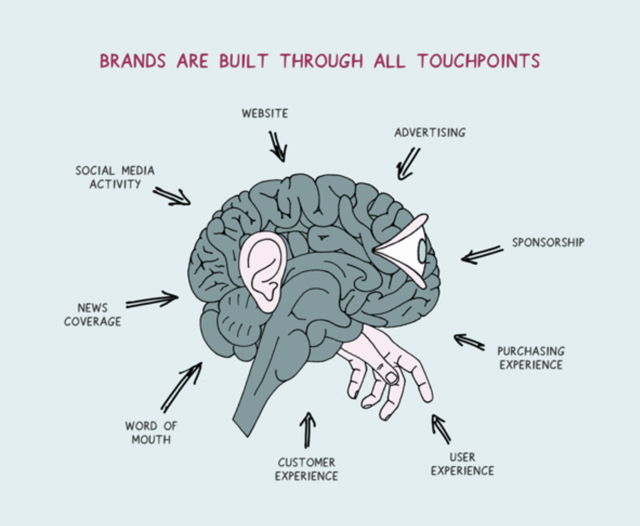In some companies, brand-building is the sole responsibility of the marketing team. The brand is seen as a consequence of advertising. However, this mode of thinking gets in the way. Every experience someone has in relation to a brand influences how they think or feel about it. The mind doesn’t discriminate between experiences curated by the marketing team and all other brand encounters. Customer experiences, for example, can be especially influential. They should all be consistent with the desired brand associations. A single good or bad experience with customer support services can have a big impact on future purchasing.
If all these experiences influence the brand, where should marketers focus their limited resources? A great place to start is within the company. Great marketers inspire everyone to get involved in brand-building. They make employees believe in what the brand stands for. For example, it is said that when President John F. Kennedy first visited NASA, he met a janitor carrying a broom down the hallway. The president asked the workman what he did for NASA. The man replied, “I’m helping put a man on the moon.” With the whole organization behind the brand, the marketing team is off to a flying start.
Which touchpoints to prioritize depends on the brand’s life stage.

NEW AND YOUNG BRANDS
With a few exceptions, new brands tend to have limited marketing budgets. Budgets only increase if the initial investment has been shown to deliver promising results. This means new brands can’t opt for activities that cost a lot upfront and take a long time to pay back. Brands in this situation are wise to focus on low-cost activities and use them cleverly to maximize their impact. For example, with a bit of creativity, news and social media can be enticed to share the brand’s story. If you have an outstanding product or service, focus on obtaining testimonials from fans and then publicize them as widely as possible (e.g. via your social media channels and website, if you can afford it).
EXPANDING BRANDS
Invest in paid-for advertising when you have the budget to reach a sufficient number of your target consumers. Consider sponsorship if the cost per reach is attractive and if your goal is to build brand familiarity or appropriate associations from the sponsored property. In 2019, PayPal became a sponsor of the Football Association in the UK. Sponsoring the country’s most popular sport helped PayPal to be seen as a trusted, everyday brand, giving it the credibility to compete with long-established brands such as VISA.
WELL-ESTABLISHED BRANDS
To maintain sales and profitability, well-established brands should continue to invest across multiple touchpoints. A big brand’s share of advertising spend should be on par with its share of the market. If it has ambitions for further growth, its share of spend needs to be higher. Paid-for advertising and sponsorship are good choices for maintaining a brand’s saliency and reminding people what they like about the brand. Social media advertising also works well since the brand can leverage its distinctive assets to quickly trigger and reinforce existing brand memories.
Contributed to Branding Strategy Insider by: Dan White, author of The Soft Skills Book, The Smart Marketing Book and The Smart Branding Book
The Blake Project helps organizations and brands in all stages of development create marketplace advantages. Please email us to learn how we can help you compete differently.
Branding Strategy Insider is a service of The Blake Project: A strategic brand consultancy specializing in Brand Research, Brand Strategy, Brand Growth and Brand Education




